Photo: Jim Roche
Earlier this year I took a trip to Japan to take photos. The photos I went to take were images high in the mountain rainforest on Yakushima Island. The trip started with a flight in a storm with the plane being blown sideways at times. From above the waves, in the ocean below, I could see sharp pointed rock formations just below the surface. We landed in what to me was a blinding rainstorm and were met at the tiny airport by the driver of our rental car. “I didn’t think you were going to make it, most flights were turned away because of the storm” she said. Time on the island was productive, although the forests didn’t present themselves exactly as I wished. And then, there were the angry monkeys. Cute as a button, but with very large teeth and a poor attitude.
Photo: Jim Roche
Afterwards several days in the forests we flew back to the mainland and stayed in a small city, Kagoshima. Kagoshima had a tired look to it. Due to the rain, we hung out in the shōtengai (商店街) district. I had started taking separate photos for posting on social media with my iPhone, and I tried setting my iPhone to monochrome and using it to collect the “travel photos” someone might take on any vacation trip. I did this because I didn’t like switching the settings on my main camera, and I liked seeing the monochrome images as monochrome on the iPhone’s screen. And then, I saw this image and took the shot. Suddenly the shadows and harsh contrast began to be something that interested me almost as much as the detail and colour of of my usual forest projects.
Photo: Jim Roche
Until then I had never been very interested in Japanese photography as it was often flat and graphic. I often take mutiple images on my camera and stack them to get detail edge to edge. But suddenly I felt a bit of excitement about these images. I imagined them printed small, in a small book, like Yasunari Kawabata’s book of short stories, “Palm-of-the-Hand Stories” stories. (Kawabata won the first Nobel Prize in Literature for a Japanese writer.) I just finished reading “Snow Country,” which was the first novel in some time that I’ve liked.
Photo: Greg Girard
After arriving back in Tokyo we started going out at night instead of the day to take photos, Then we went to Tsutaya Bookstore in Shibuya Scramble Square. There I found books that were on the one hand nothing more than zines, and on the other, handmade or at least highly designed and low edition art objects. Books with photos of public toilets, ordinary hilltops in Tokyo, closed bars and restaurants and Greg Girard’s Snack Sakura series. While not Black and White, they are usually monochrome and dark. Everything is cloaked in shadows and decorated with imperfections.
Photo: Greg Girard
So I wanted to include in this essay some of the things that my trip to Japan, and the use of my iPhone, have got me thinking about. Some I’ve discussed before. But I believe that photography as art is more than just taking a photo. It’s taking a photo for a purpose, to solve a problem, or to demonstrate an idea.
Photo: Greg Girard
Back to In Praise of Shadows
Japanese photography has developed a distinctive voice within the global photographic community, characterized by a blend of tradition and modernity. Yes, this modernity can often be overwhelmed by a filter of 50-60s nostalgia. The work of prominent photographers like Daido Moriyama and Masahisa Fukase reveals a connection to the cultural aesthetics discussed in Junichiro Tanizaki's essay "In Praise of Shadows." (I’ve written about this in an essay before, you’ll find that essay here on substack.) I feel there are strong connections between Tanizaki’s aesthetic philosophy and the works of many notable Japanese photographers, and examining how these theories manifest in the visual narratives and styles of Moriyama, Fukase, and others can only improve your work.
Photo: Jim Roche
Photography was introduced to Japan in the mid-19th century during a period of significant social and political change. Early Japanese photographers, such as Ueno Hikoma and Shimooka Renjō, adopted Western techniques while infusing their work with Japanese aesthetics. This period marked the beginning of a unique photographic tradition that combined the precision of Western technology with the subtlety of Japanese artistic sensibilities. Tanizaki’s “In Praise of Shadows” (1933) is a seminal essay that delves into the nuances of Japanese aesthetics, contrasting them with Western approaches. (Yes, it’s a bit sexist, and racist, but consider it as a reflection of the times.) Tanizaki extols the beauty of shadows, subdued lighting, and the subtle gradations of darkness that characterize traditional Japanese art and architecture. He argues that these elements evoke a sense of mystery and depth, fostering a contemplative and truly immersive experience. All of the photographers I’ve mentioned use these characteristics, even, amazingly, when the images are high contrast and flat, printlike. Tanizaki's appreciation for the interplay of light and shadow, and his emphasis on the beauty of the imperfect and the transient, resonate deeply with the ethos of Japanese photography. His ideas provide a framework for understanding the visual and emotional impact of the works of many Japanese photographers, who often seek to capture the ephemeral and the unseen. I think everyone should read the essay. It’s available as a book, or can be found on-line.
Photo: Daido Moriyama
Daido Moriyama, one of Japan's most influential photographers, embodies the principles articulated by Tanizaki. Known for his gritty, high-contrast black-and-white images, Moriyama's work captures the chaotic energy of urban life. His photographs often feature blurred and grainy textures, evoking a sense of disorientation, brokenness, and impermanence.
Photo: Diado Moriyama
Moriyama’s style reflects Tanizaki’s celebration of shadows and subtle nuances by embracing imperfections in textures that translate poorly in these high-contrast images, and emphasizing the overall interplay between light and dark. Moriyama's work invites viewers to explore the deeper layers of his subjects. His book "Farewell Photography" (1972) is a prime example of this approach, presenting a fragmented and raw portrayal of post-war Japan that aligns with Tanizaki's aesthetic values. Imperfections abound.
Photo: Masahisa Fukase
Masahisa Fukase, another well known Japanese photographer, is know for his photos of his second wife, for years he constantly and almost exclusively photographer her. Just her. Then they divorced. His next work,"The Solitude of Ravens" (1986) is another work that resonates with Tanizaki’s theories. Fukase’s series, created in the aftermath of his divorce, uses the motif of ravens to explore themes of loneliness, loss, and existential angst. Emotional brokenness. The dark, moody images of ravens in desolate landscapes and urban settings evoke a profound sense of melancholy and introspection.
Photo: Masahisa Fukase
Fukase’s use of deep shadows and stark contrasts aligns with Tanizaki’s appreciation for the evocative power of darkness. The images in "The Solitude of Ravens" are haunting, and poetic, drawing viewers into a world where light and shadow play a crucial role in conveying emotional depth and narrative complexity. These are some of the most empty, sorrowful, and lonely photos you can imagine.
Photo: Masahisa Fukase
Eikoh Hosoe is another Japanese photographer whose work reflects Tanizaki’s aesthetic principles. Known for his collaborations with the avant-garde artist Tatsumi Hijikata, Hosoe’s series "Kamaitachi" (1969) captures the enigmatic and surreal performances of Hijikata in rural Japan. The images are characterized by dramatic contrasts and a play of light and shadow, creating a sense of mystery and otherworldliness.
Photo: Eikoh Hosoe
Hosoe’s work embodies Tanizaki’s idea of beauty in darkness and the unseen. The photographs in "Kamaitachi" transcend mere documentation, becoming poetic expressions of movement and emotion that draw viewers into a shadowy, dreamlike realm.
Photo: Rinko Kawauchi
Rinko Kawauchi’s photography offers a very different contemporary interpretation of Tanizaki’s aesthetics. She illuminates the ordinary…to an extreme. Her work, often centered on everyday moments, employs soft, natural light and a muted almost monochrome color palette to create images that are both intimate and contemplative. They seem like easy-to-take images, like snapshots gone awry. You sometimes wonder, “Does she know how to use her camera?” But Kawauchi’s series "Illuminance" (2011) demonstrates her ability to find beauty in the ordinary and the transient.
Photo: Rinko Kawauchi
While Kawauchi’s style is less dramatic than that of Moriyama or Fukase, her focus on subtlety and the delicate interplay of light and shadow aligns with Tanizaki’s principles. Her photographs evoke a quiet sense of wonder, encouraging viewers to appreciate the fleeting beauty of the world around them. Again, things seem temporary, transient.
Photo: Jim Roche
Yes, Tanizaki’s writing is in fact a necessity. The works of Daido Moriyama, Masahisa Fukase, Eikoh Hosoe, and Rinko Kawauchi exemplify the principles of light, shadow, and subtlety that Tanizaki celebrated. These photographers, through their unique styles and narratives, continue to explore and expand the rich tapestry of Japanese photographic art, capturing the ephemeral and unseen in ways that resonate with both Japanese traditions and contemporary sensibilities. And now that I carry my iPhone with me all the time, they seem waiting to be captured.
P
Photo: Jim Roche
In an article written for the British Journal of Photography Martin Parr describes Kawauchi’s work this way: “So what is the subject matter and why are so many people excited about her work? Well the simple answer is that it concerns the pleasures and terrors of everyday life”
Photo: Jim Roche
Everyday life, things you might just walk by, seem more appropriate for my iPhone than my regular camera sitting on its tripod. These photos I’ve been taking are more likely taken on the way to, or the way from, a photo shoot. I think that’s a good thing for now.
____________________
Usually, I give a list of books and videos about what I’ve written, today I’m just going to suggest you look up these names on the web, and consider how what you find might change what you make.
Again: Please, make comments. This is supposed to be a conversation. And repost my page, or suggest it to friends. If you subscribe, it’s free, and you’ll get notifications and on occasion a few photos. Nothing more. You can visit my website at www.jimroche.ca
Jim




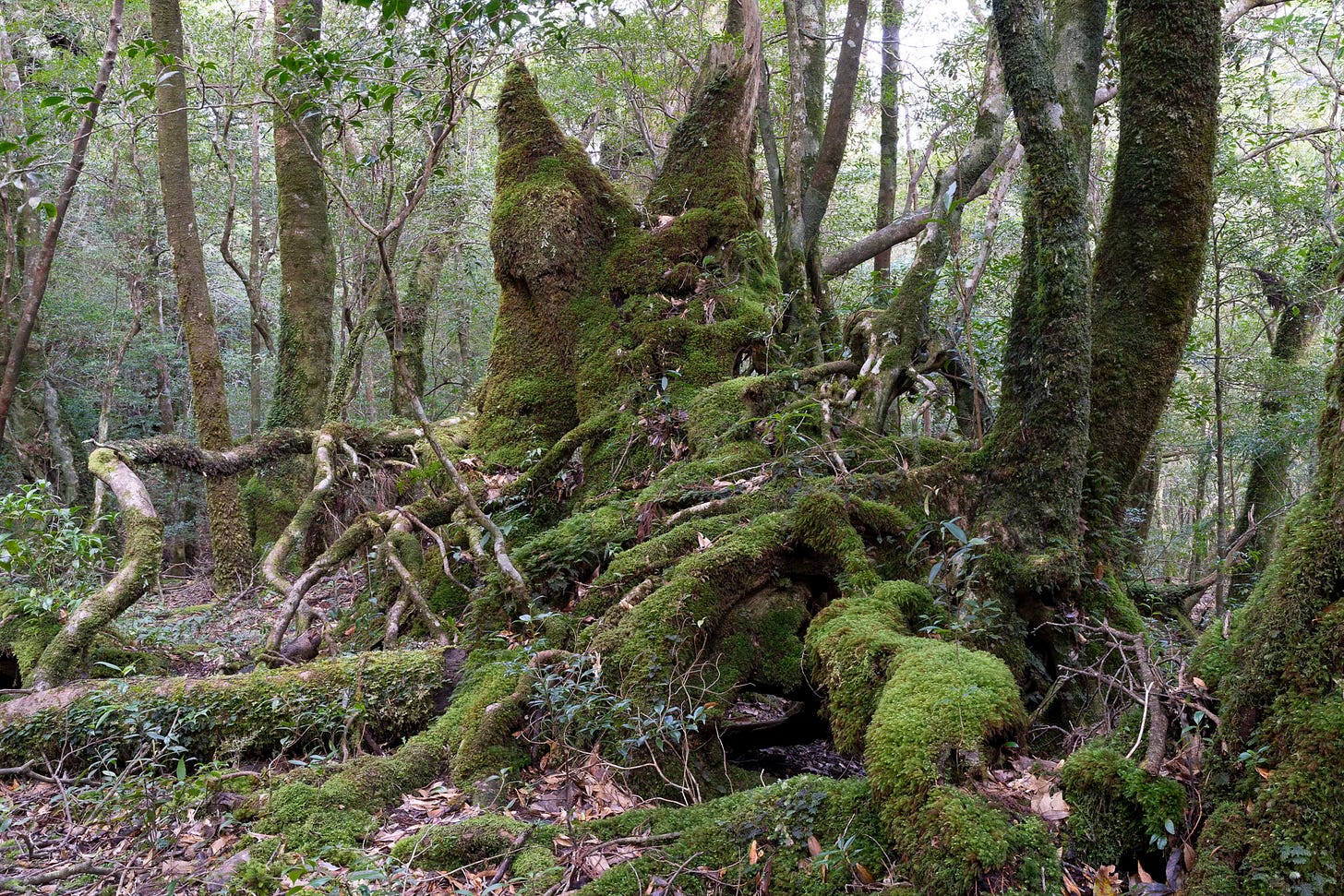

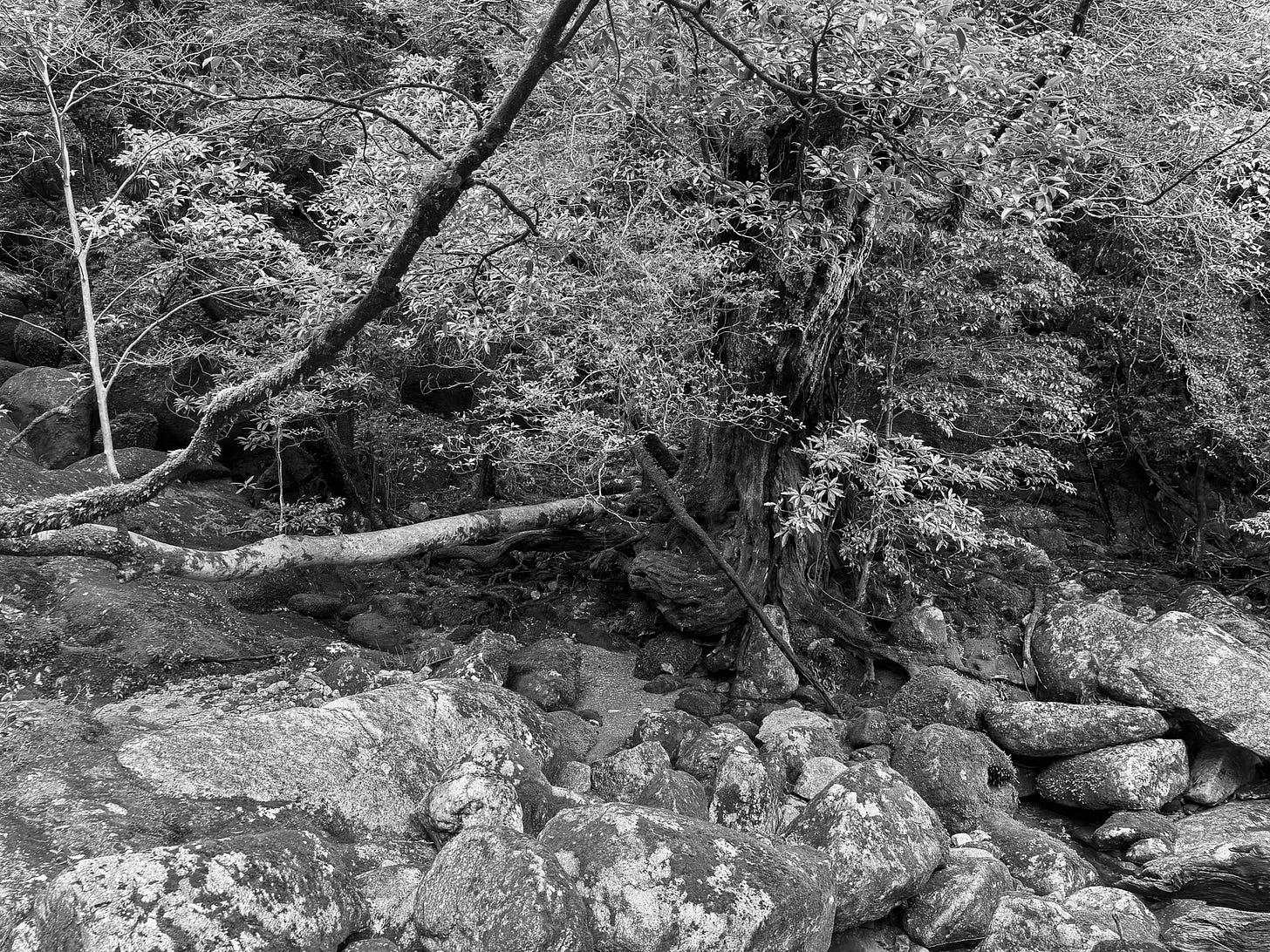

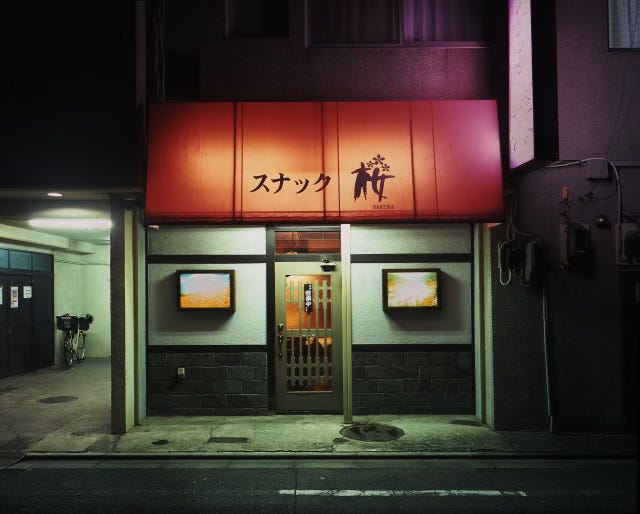
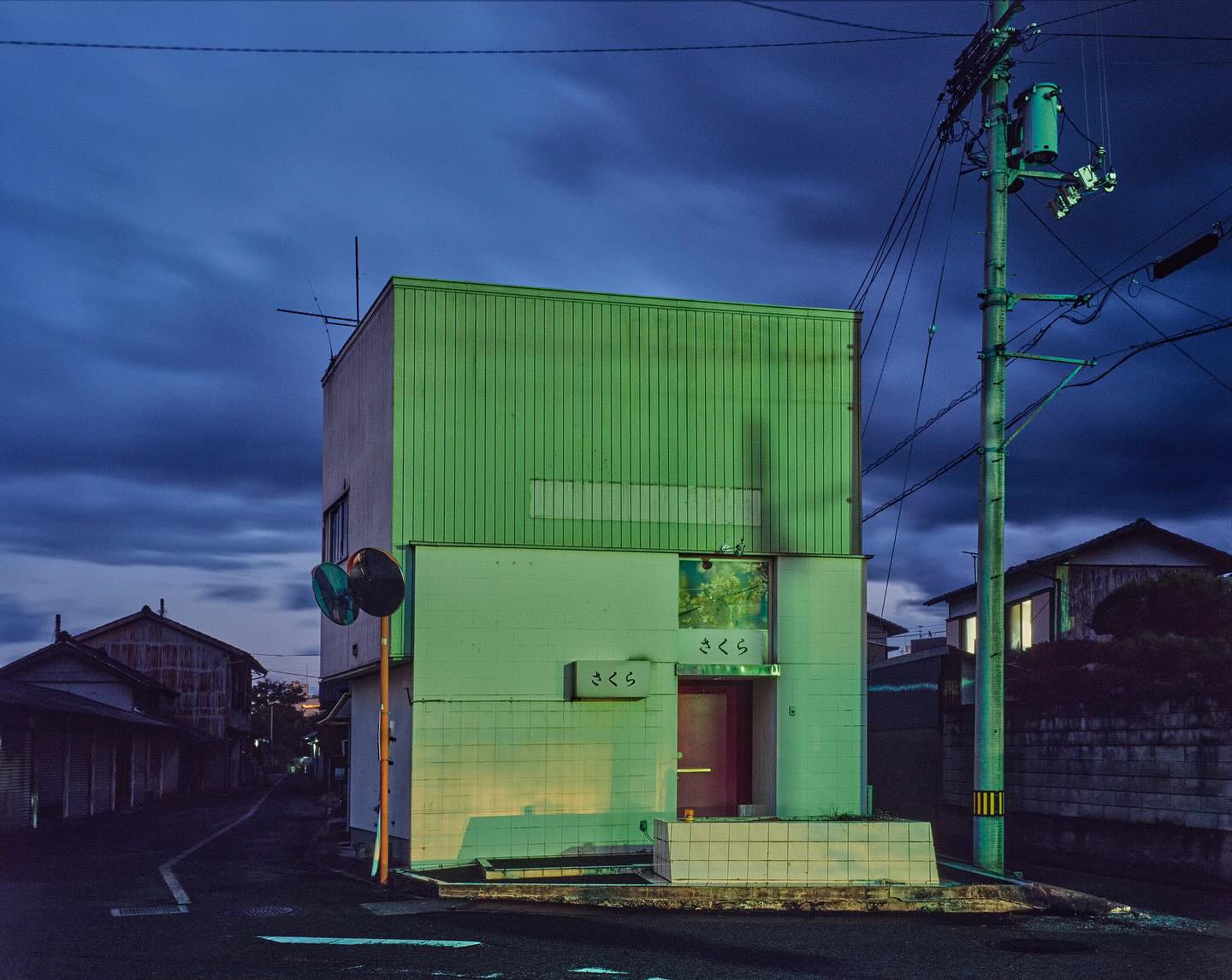











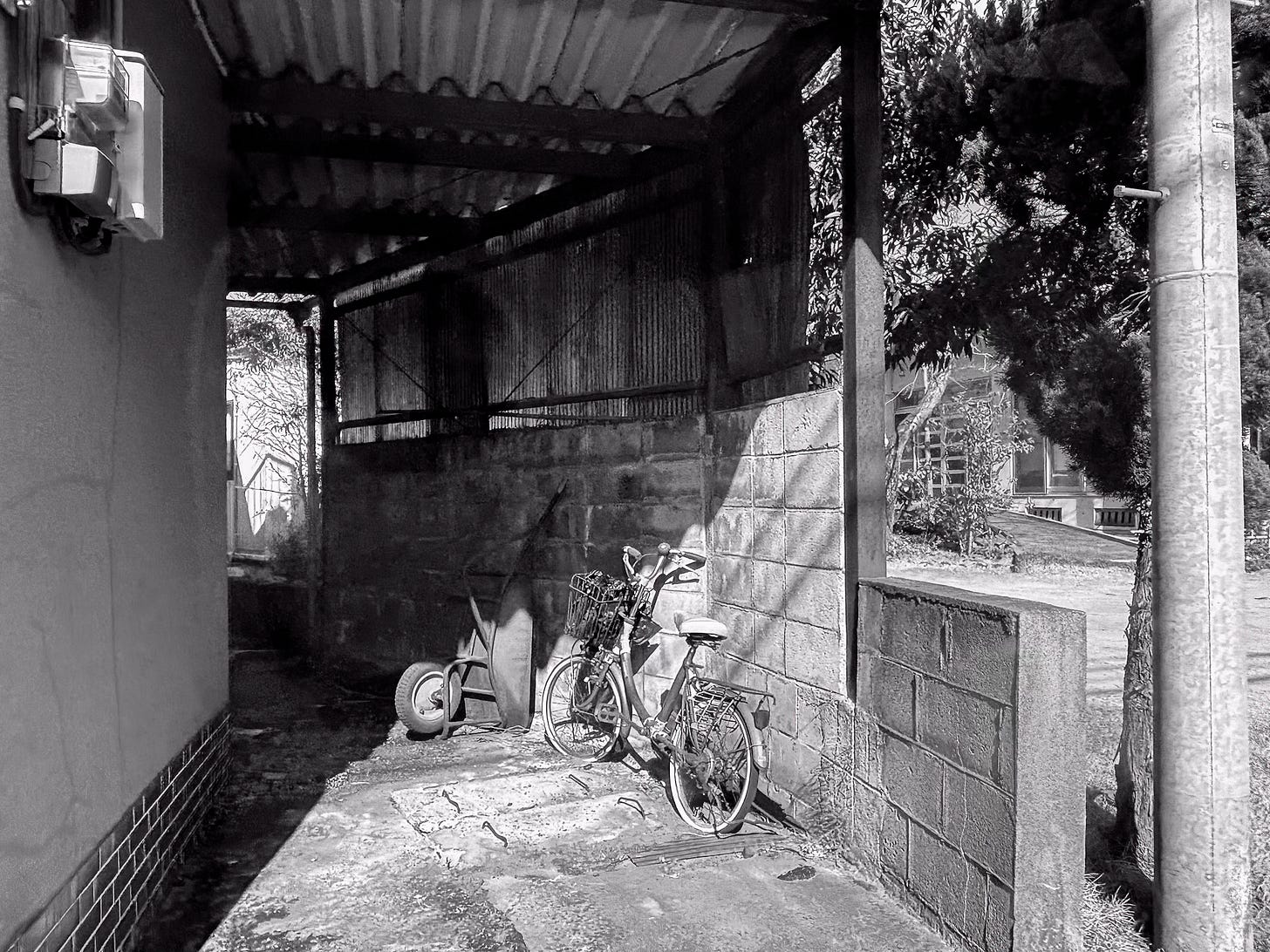
Thank you Jim - just diving down the rabbit hole! (I must say I am envious of your visit to Japan's forests - very much on my wishlist).
Thanks for sharing this. I'm a big fan of Moriyama and Fukase's book on Ravens. Think Japanese photographers deserve more credits. Love that 'Are Bure Bokeh' style photography.